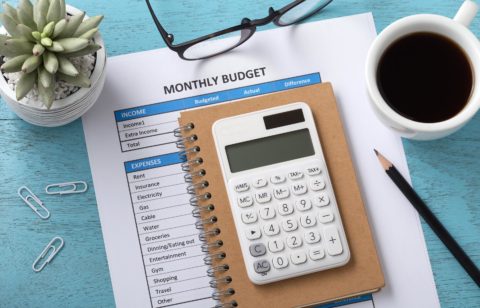Free Resources and Expert Advice
If you’re feeling overwhelmed by student loan debt, know that you’re not alone. According to Forbes, Americans share about $1.75 trillion in student loan debt, with an average of $28,950 per borrower.
Luckily, there are many strategies and free resources to help you explore options for repayment and potential loan forgiveness.
Should you pay for help?
First things first: Some predatory companies may try to take advantage of people who are in a tight spot, charging hefty fees for ‘magic solutions.’ The truth is that you hold the same power to tackle this yourself using free resources from the government and non-profit organizations.
If you do feel that you need third-party help, don’t just sign up with a student loan company without first checking it out with the Better Business Bureau and reading its online reviews. Be especially wary about any company that insists that you quit paying on your loans while it negotiates your debt, as that could result in you defaulting on your loans.
Your Repayment Options
Become best friends with the resources at The Consumer Financial Protection Bureau (CFPB). Their guides provide clear explanations and empower you to make informed decisions. Remember, knowledge is your key weapon! Here are some repayment options:
- Government Relief Options: For federal student loans, the government offers various lifelines, including consolidation, deferment and even forgiveness programs. Think of them as safety nets to catch you during financial difficulties. Studentaid.gov is a great place to start.
- Deferred Payments: Facing temporary hardship? Contact your loan servicer to explore forbearance or deferment. These options temporarily suspend payments, giving you breathing room to get back on your feet. It can be a chance to regroup and strategize your next move.
- Consolidation: While it won’t magically erase your debt, consolidation can potentially simplify things by combining multiple loans into one, potentially with a lower interest rate. Just make sure you compare the new interest rate carefully before proceeding.
- Spread out your payments: The standard 10-year repayment plan isn’t the only option. Federal loans may allow you to extend payments over 20, 25, or even 30 years, lowering your monthly burden. Remember, though, you’ll pay more interest overall.
- Income-Based Repayment: Struggling with a low-income job? Income-based repayment plans adjust your monthly payments to your income, making things more manageable. It’s like having a flexible budget that adapts to your current situation. After 20-25 years of on-time payments, remaining debt may even be forgiven!
- SAVE Program: This new government program is basically a ‘chill’ button for borrowers. It cuts monthly payments in half for undergrads, makes it easier to qualify for $0 payments, and even forgives smaller loans faster. It’s not perfect, but for many, it’s a big sigh of relief.
Forgiveness Options for Public Servants
If you work in public service, you may have the option to be rewarded for your dedication in the form of loan forgiveness.
- Public Service Loan Forgiveness: If you work in government or for a non-profit, this program is your champion. After 10 years of full on-time payments while employed, your remaining debt may be forgiven! It’s a thank you for your dedication, rewarding you with a debt-free future. Remember, specific requirements apply.
- Teacher Loan Forgiveness: This program is available to those who have committed 5 consecutive years of full-time teaching in a qualifying low-income school. Similar programs exist for Perkins Loans, so do your research!
- State-Specific Support: Check your state’s Department of Education website for loan forgiveness programs available to professionals like doctors and teachers. Think of them as bonuses on top of your federal options!
Feeling Overwhelmed? Seek Free Guidance:
Don’t hesitate to seek free guidance from government resources, your loan servicer or non-profit organizations. Remember that often it costs absolutely nothing to apply for these programs and, in most cases, all you need to do is send in an email, make a phone call or complete a form. That’s just a little work for a lot of peace of mind!







